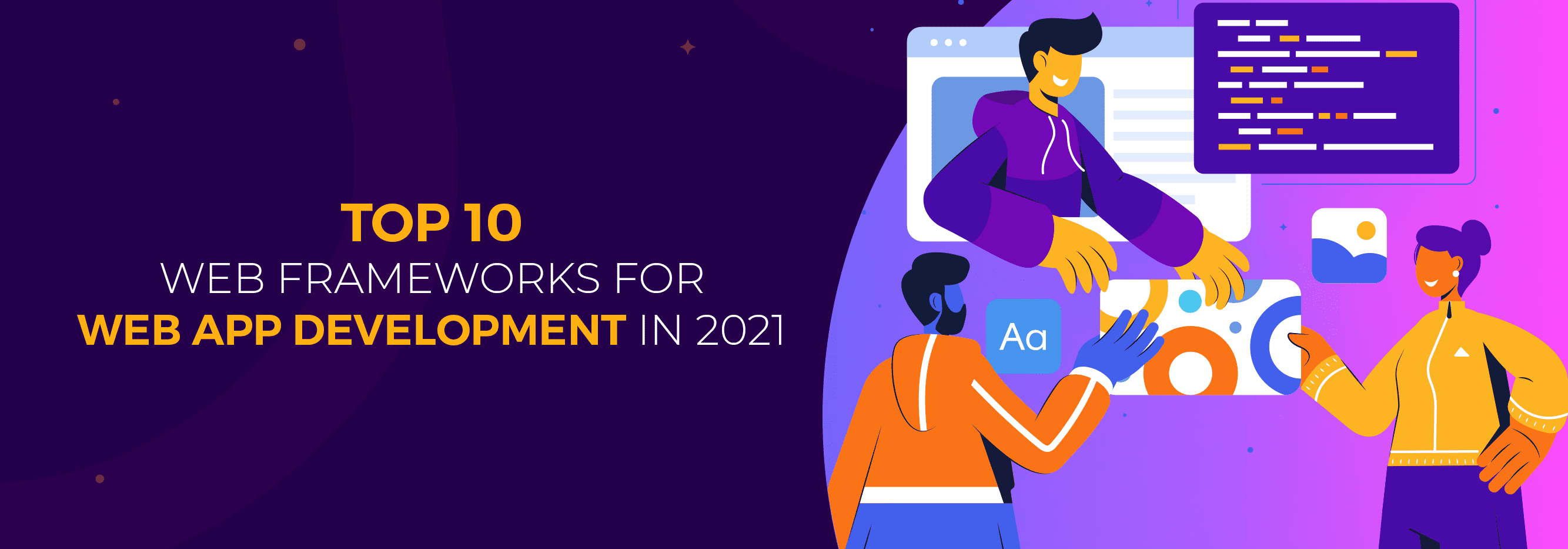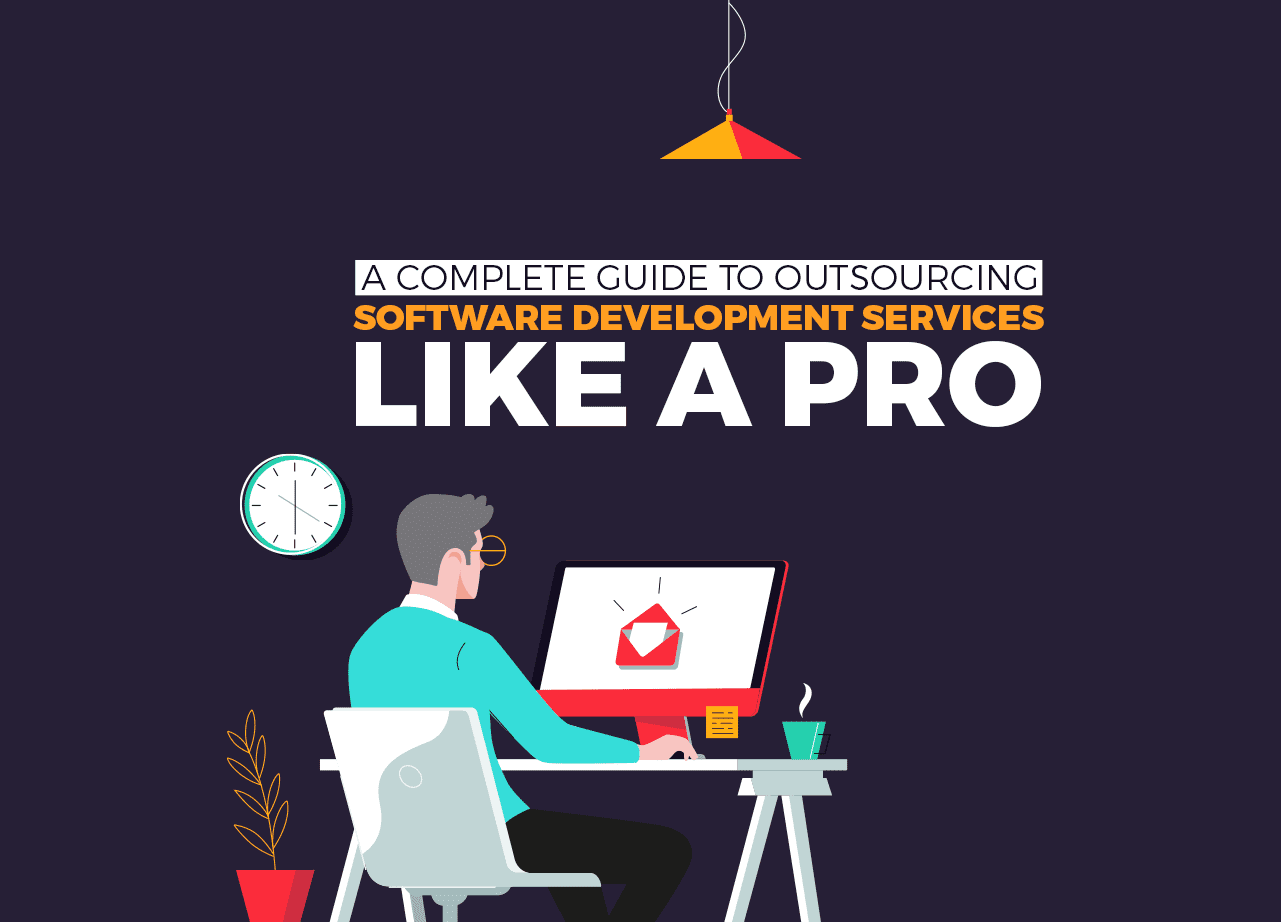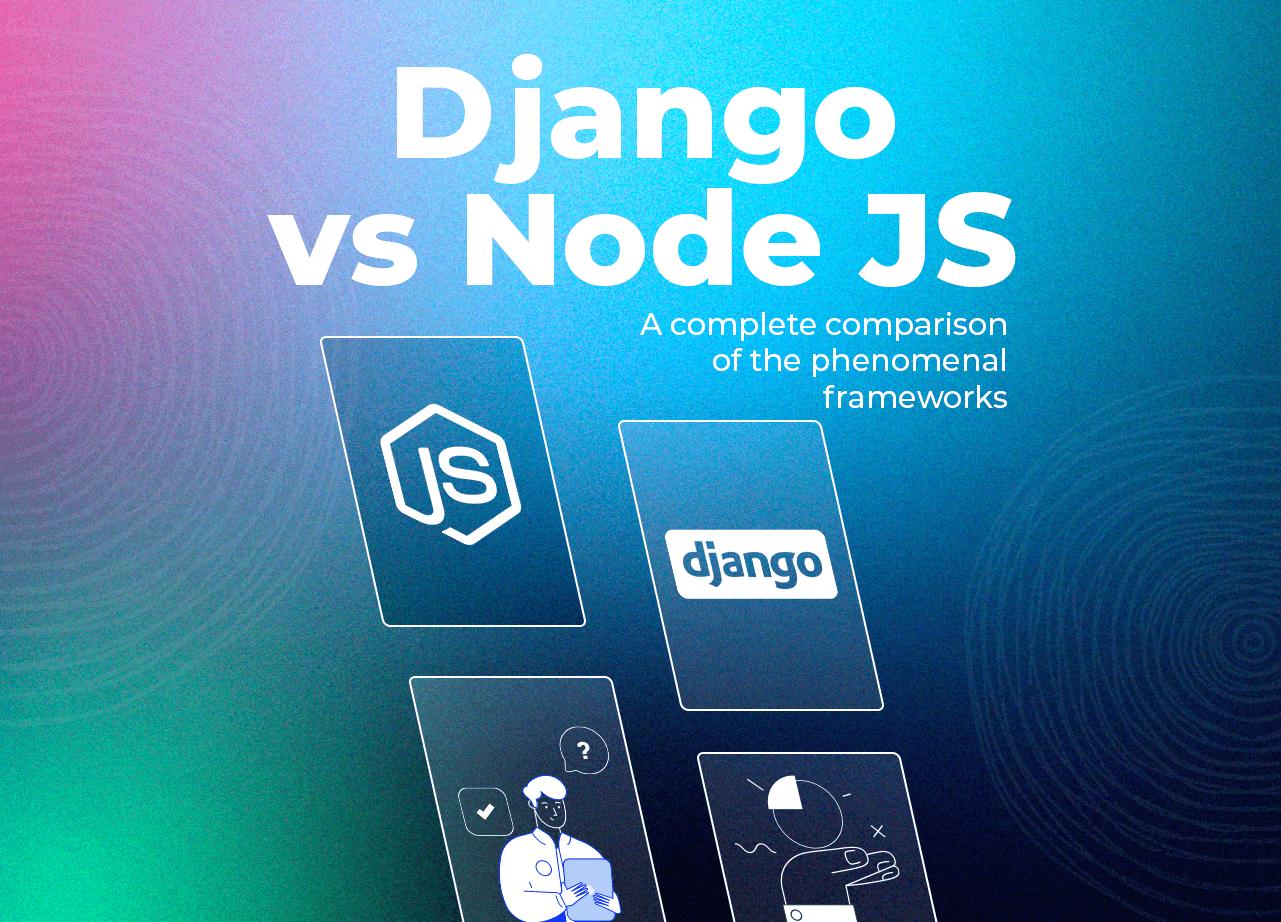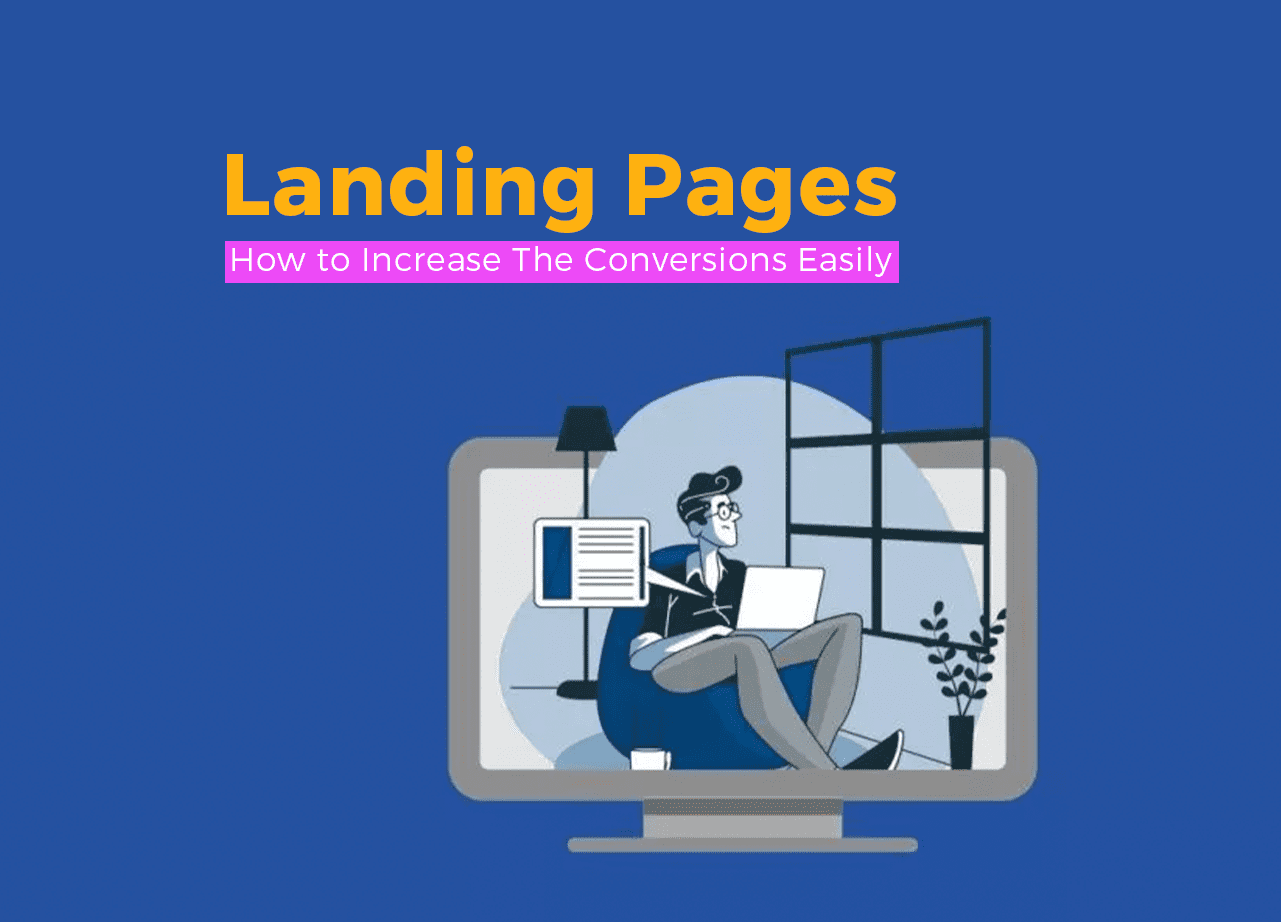Web development frameworks are software frameworks that are custom designed to support the development of web applications. But also to develop web services such as web APIs and other web resources. They basically have a set of resources and tools that software developers use to build, test and manage custom websites and web applications.
Every year, either there are new web frameworks that completely change the way web development is carried out. Or there are significant updates to the existing frameworks that help enhance the quality and experience of web products.
In 2020, the global enterprise software was at 465 billion U.S. dollars. And now, it is set to reach 506 billion U.S. dollars in 2023.
In this digital age, modern-day businesses heavily depend on having a great online presence, making creating a fast, secure and user-centric website the first step towards success.
But the question is, which web development framework should you go for?
There are more than 25 web development frameworks. As a leading web development company, Communication Crafts has been creating scalable, secure and revenue-generating customer-centric websites and web apps for our clients.
Over the years, we’ve worked with 20 different frameworks in web development & mobile app development. We always work with the latest technology in the market, to help create state of the art digital products that would provide users with unforgettable user experiences that ultimately result in higher conversions and revenue.
We’re experts with the most popular frameworks in 2020. And leading with that expertise in the field of technology, we know the most reliable and profitable web frameworks in 2023 to work with.
Here is a list of the top 10 web frameworks in 2023:
- Angular
- React.js
- Vue.js
- Ember
- ASP.NET
- Backbone.js
- Django
- Ruby on Rails
- Laravel
- Spring
1. Angular

Managed by Google, Angular is the best front-end web framework. It has a large community of developers. It is a client-side JavaScript framework.
Established back in 2009 as AngularJS, it uses JavaScript programming language. But in 2016, almost a decade later, Google reintroduced Angular JS as Angular. And this time, it was much better, secure and faster.
The new version of Angular uses Typescript as its main programming language.
Angular. Since then, Angular has used Typescript (similar to JavaScript) as its main programming language.
Being a front-end web framework, it is based on the MVC framework (Model-View-Controller), which allows angular developers to make client-side dynamic webpages.
While due to the complexities of its structure, controllers, directives and huge libraries, coding in Angular can get quite time-consuming if you’re never worked with this web framework before.
Advantages of using Angular:
- Accelerates application development.
- Supports the MVC framework.
- Two-way data binding makes it an impeccable choice for real-time applications, which means if data changes, the user interface of the app will reflect the changes in real-time.
- For single-page apps, Angular makes the perfect fit.
- It already has a large community and is growing.
Disadvantages of using Angular:
- It might not be easy to start coding with Angular for beginners.
- Processing is not fast.
- Documentation is not systematic.
Some of the MNCs that use Angular are:
- BMW
- Microsoft
- PayPal
2. React.js

React is a JavaScript library developed by Facebook that is used to build a user interface (UI) for front-end applications.
So why is it in the web framework list?
Because React.js has the same purpose as a web framework. If anyone comes as close to Angular, it’s React. With Angular vs React debate always coming up between developers, it’s safe to say both are at par.
But if you want to know the details, here’s a read on Angular vs React- which makes the ideal choice?
Now using React.js we can also create single-page applications. The standout part being, you can even develop a great mobile app using this front-end framework library. This is a highlight since most front-end frameworks and libraries don’t have the capacity to enable developers to create mobile apps.
As React is a library, it does not support many features like other Front-end frameworks, which is why to build a proper single page application, React integrates with other libraries for dealing with state management, routing, and interaction with API.
Advantages of using React.js:
- Its virtual DOM supports fast manipulation in the document.
- Easy integration with other libraries.
- Supports mobile app web development.
Disadvantages of using React.js:
- Does not have well-organized documentation.
- It has a much more complex structure than JavaScript.
Some of the MNCs that use React are:
- Uber
- AirBnB
3. Vue.js

Another great open-source JavaScript-based web framework is Vue.js. It was launched in 2014 by a developer named Evan You. Despite not being created a tech giant, it gained massive popularity.
Just like React and Angular, Vue.js is also used to create user interfaces for web apps and other single-page apps. Based on the Model-View-View-Model (MVVM) architecture, Vue.js provides faster development and can be integrated with other applications. While it is easy to learn, experienced developers do not go with Vue.js since it is not supported by technology giant MNCs.
Advantages of using Vue.js
- Faster development lifecycle.
- The smaller size of apps.
- Easier to maintain.
- Simple to learn.
- Easy integration with other applications.
Disadvantages of using Vue.js
- Does not have proper tools.
- Not supported by tech giants such as Amazon and Facebook.
Some of the MNCs that use Vue.js are:
- Apple
- BMW
4. Ember

Released back in 2011, Ember has been one of the most popular cross-platform frameworks since then. It is written in JavaScript. It is used by professional developers to build front-end apps. Ember also uses the MVMM model like Vue.js.
Due to its elegant interface, and the ability to create performance-driven applications for the client-side, the Ember framework can also be used to build mobile apps and desktop apps. And its elegant syntax, fast & secure delivery of beautiful interfaces is the reason popular websites like Apple Music, Square Inc and Twitch use Ember as their choice for web development.
Advantages of using Ember:
- A high-performance framework leads to performance-driven applications.
- Scalable and elegant development environment.
- Well-maintained, extensive documentation.
- Debugging is easy as it supports code debugger.
Disadvantages of using Ember:
- It is difficult to grasp hold of for beginners.
- Not the best framework for small projects.
Some of the MNCs that use Ember are:
- Netflix
- Apple
- Twitch
- Yahoo
Take your web development to the next level!
5. ASP.NET

Developed by Microsoft, the ASP.NET web application framework can be used to build scalable, vibrant web applications for mobile phones and web apps. ASP.NET is known for its speedy development and delivery of performance-driven applications.
Advantages of using ASP.NET:
- World-class toolbox
- Ability to divide application across several languages
- Secure framework
- Cross-platform migration
Disadvantages of using ASP.NET:
- Documentation is not good
- Porting ASP apps from one port to another is costly
Some of the MNCs that use ASP.NET are:
- Tacobell
- MasterCard
- SpaceX
6. Backbone.js

A lightweight framework uses a JavaScript library efficiently, yet the Backbone is not exactly a web framework. But just like any other front-end web development framework, backbone.js can be used to build great single-page web applications.
It was released in 2010, developed by Jeremy Ashkenas. Based on the Model-View-Presenter (MVP) architecture. Though it is a library, it cannot be used to build a fully-fledged web app.
Advantages of using Backbone.js:
- Ideal framework for small-sized apps
- User-friendly
- Really good organized documentation.
- Easy to learn and implement.
Disadvantages of using Backbone.js:
- High-quality app cannot be created alone using Backbone.js.
- The community is reducing in size.
Some of the MNCs that use Backbone.js are:
- Uber
- Walmart
7. Django

Django is a Python framework- one of the best. It is a server side framework used for building web applications that are scalable and secure. It is one of the best backend frameworks in the world. Developers love using Django.
Matter of fact, there are thousands of Django projects available on GitHub & Stack Overflow that signifies its growing popularity in the developers’ community.
Django uses the Model-View-Template (MVT) architecture. It is a feature-rich backend framework that enables experienced web developers to build robust and high-quality apps.
Advantages of using Django:
- Enables faster development.
- Comes with an inbuilt authentication tool.
- Good security measures.
- Can build highly complex apps.
- Large community of Django developers.
- Documentation is really good.
Disadvantages of using Django:
- Slower processing.
- Learning curve is steep.
Some of the MNCs that use Django are:
- Uber
- Udemy
8. Ruby on Rails

Ruby on Rails (RoR) is one of the oldest, yet still a highly-preferred backend web development framework. Based on the Ruby programming language and the PHP web development framework, RoR is used for creating web applications that require complex functionalities integrated. One of the features, when Ruby on Rails stands out, is that it can be used to build a cloud-based application.
Advantages of using Ruby on Rails:
- Various libraries and tools.
- Faster and secure development.
- Automated processes are enabled.
- Huge support from the community.
Disadvantages of using Ruby on Rails:
- Slower processing speed.
- Documentation is not good.
Some of the MNCs that use Shopify are:
- Airbnb
- Hulu
- Netflix
9. Laravel

Laravel is another great PHP web framework. Being the most preferred application development framework to build powerful backend web apps, the Laravel web framework is taking PHP development to new heights.
Laravel is an open-source framework that is based on the Model-View-Controller model making it easy to learn.
Advantages of using Laravel:
- Latest PHP frameworks features are available in Laravel.
- Proper well-organized documentation.
- Integration with mail services.
- Backends can be cached for faster access.
Disadvantages of using Laravel:
- No support for payment gateways.
- Not an ideal framework to develop mobile apps.
Some of the MNCs that use Laravel are:
- BBC
- Pfizer
looking for top-tier web developers to work on your digital project?
10. Spring

Java has been powering the web for many years. Developers love Java, that’s no secret. And that’s why the Java-based Spring framework is gaining popularity. Spring is also based on the MVC architecture.
It is fast, performance-driven and delivers premium-quality applications. Everything that the web developers, mobile developers and java developers in particular desire.
Spring framework is the perfect backend development platform. Since it uses Java, and Java is way better than Python in terms of performance, Spring makes an ideal framework to build and scale applications easily.
Advantages of using Spring:
- Build using Java.
- Flexible environment.
- High performance.
- It is easier to maintain.
- Can be integrated with several tools.
Disadvantages of using Spring:
- High learning curve.
- It can be unstable at times.
Some of the MNCs that use Spring are:
- Accenture
- Zalando
Summing Up
These are the top 10 web frameworks for web app development in 2023. While each of the above frameworks has its pros and cons, choose the framework that can best satisfy your web development requirements and business needs seamlessly.
 Blog Communication Crafts
Blog Communication Crafts





